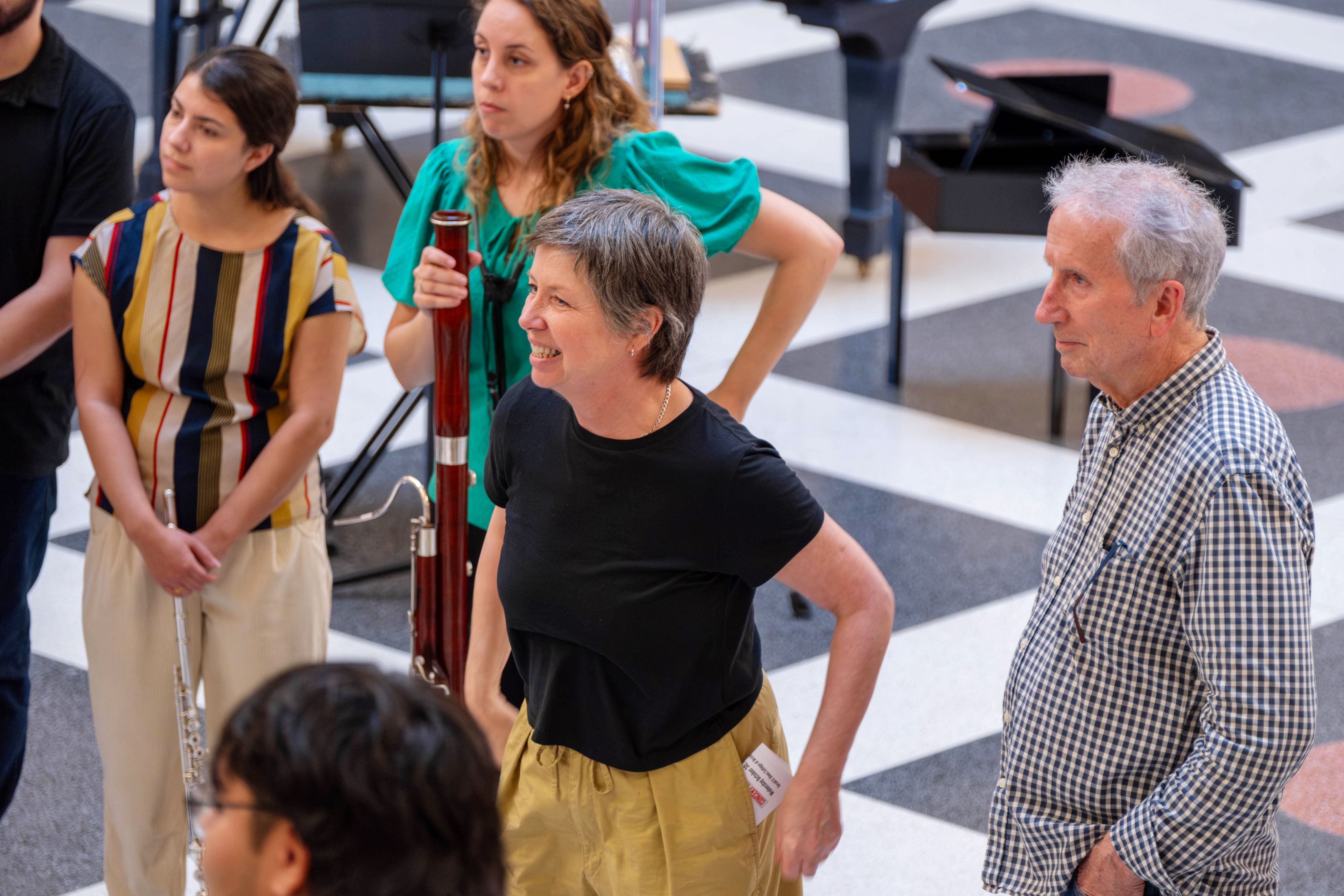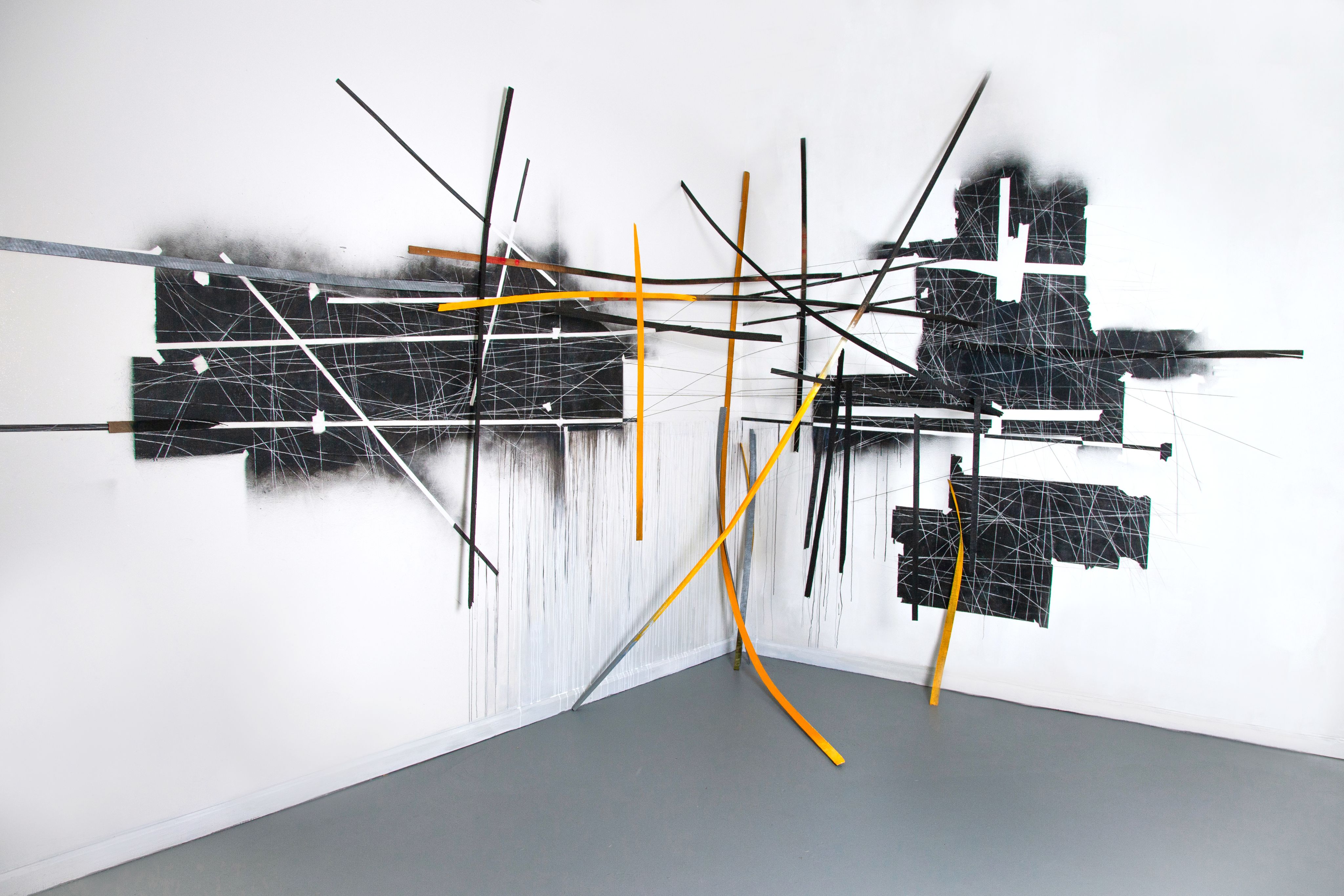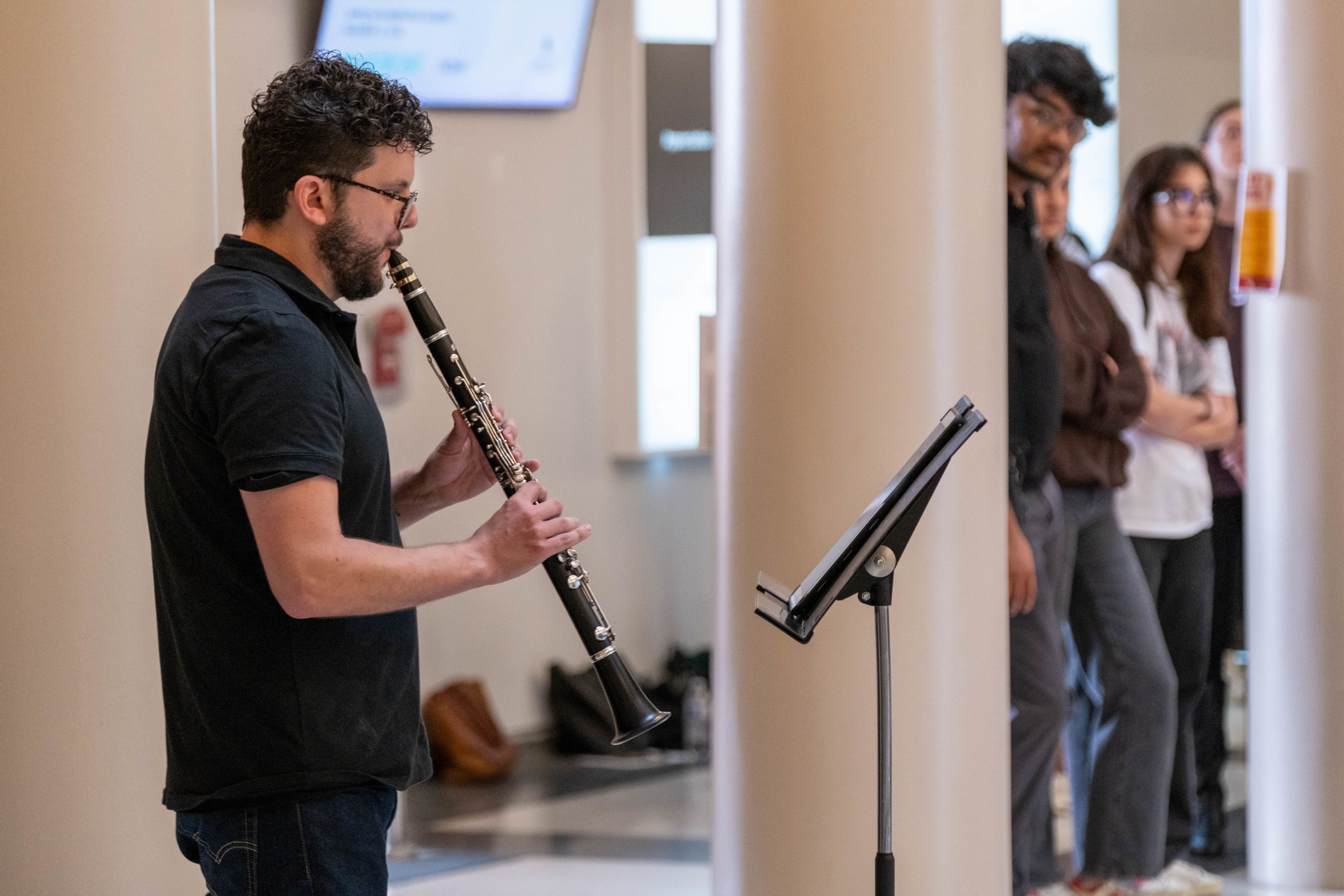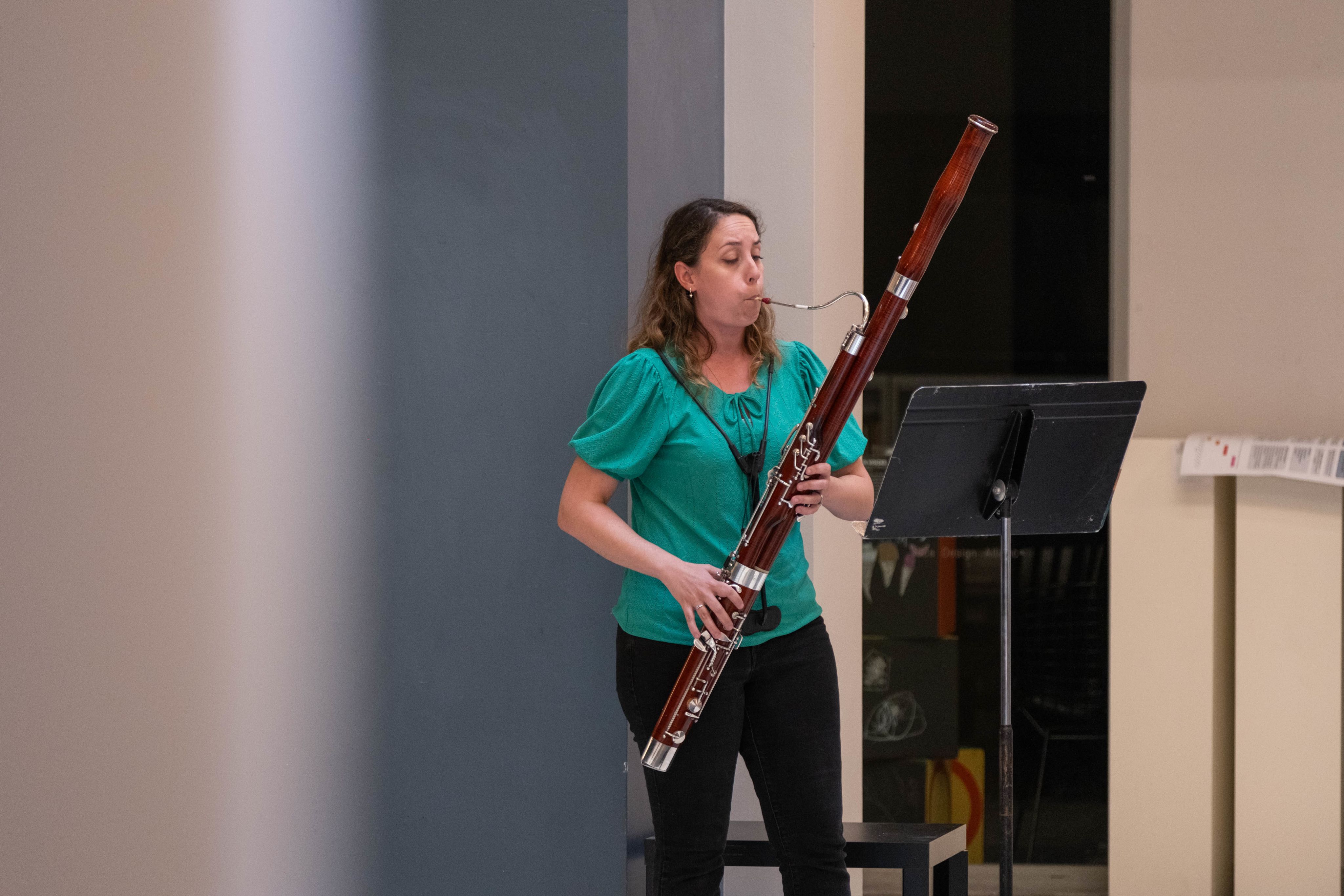Call and Response Provides Authentic Collaboration Among the Arts
Cynthia Woods Mitchell Center for the Arts Visiting Artists Work with Students to Visualize the Structure
of Sound
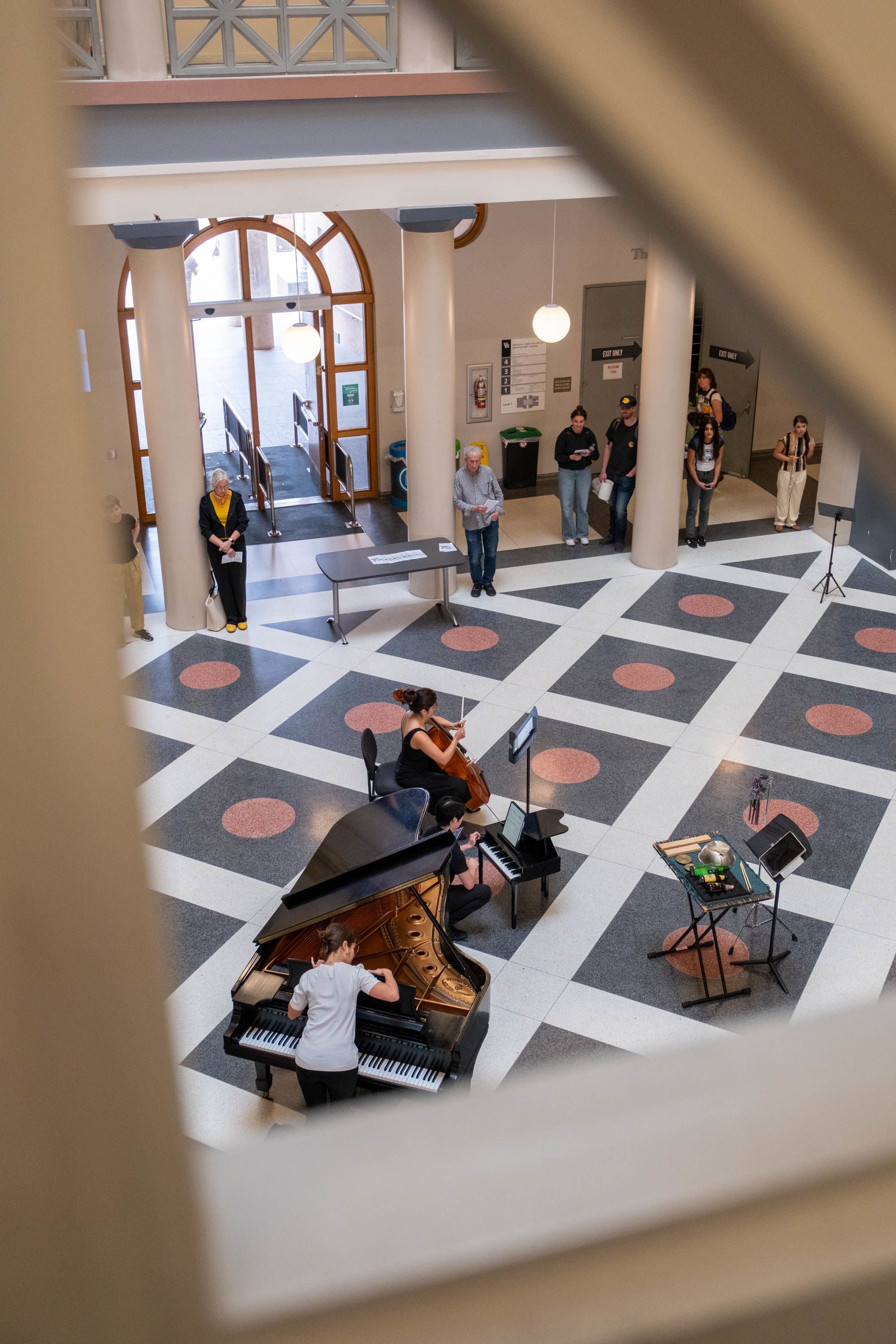
On the evening before Halloween, overlooking the atrium of the University of Houston’s Gerald D. Hines College of Architecture and Design, students fill the latticed stairways of the second and third floors to break from their academic pursuits and enjoy original compositions performed by AURA Contemporary Ensemble.
The concert, attended by the university community, members of the public, and a T-rex (inflatable, that is) of unknown affiliation, was the first performance in an extended series bringing together students and faculty from the college of architecture and Moores School of Music. Guided by visual artist Alex Julyan and composer Stephen Montague Call and Response is a semester long, collaborative project sponsored by the Cynthia Woods Mitchell Center for the Arts, exploring the interrelationship between architecture and music.

Each week Montague and student composers will write new music while Julyan works with architecture students to develop a site-specific sculpture. Process-based and experimental, Call and Response seeks to integrate auditory and visual space through the creation of a mixed-media installation which will serve as a living structure for sound. “We are going to be inspired by each others’ progress as we work step by step,” explains Montague, “to create a musical structure that is somehow analogous to the sculptural structure.”
Based in London, Montague and Julyan, who are partners in both art and life, have collaborated frequently across disciplines throughout their careers, but say their tenure this fall at the University of Houston affords them a new and unique opportunity. “This is abnormal in the best sense,” comments Montague on collaborating simultaneously with music and architecture students, “it’s quite an exciting departure exploring an area that neither of us have really explored this way before.”
Alex Julyan (middle left) and Stephen Montague (far right) meet with students after the inagural performance to discuss their impressions following the concert.
Alex Julyan (middle left) and Stephen Montague (far right) meet with students after the inagural performance to discuss their impressions following the concert.
Alex Julyan, RAILROAD USA, 2018, found materials , 300 x 250 x 240 cms. Image courtesy of the artist.
Alex Julyan, RAILROAD USA, 2018, found materials , 300 x 250 x 240 cms. Image courtesy of the artist.
Montague, a composer, pianist and conductor for over fifty years, is looking forward to the length of the residency, allowing room for reflection—a luxury often denied to himself and Julyan due to the fast turnarounds and demanding logistics typical of their past creative productions. “Having a longer period of time like we have here will give the musicians a refinement level that will probably be more rewarding to the project than we normally have,” he says.
Julyan, who began her fine arts practice as a painter, likens the collaborative process to a sketchbook: inventive, rough around the edges, and, most importantly, a space to make mistakes and take risks. “I’m used to collaborating in public much more than in an institution,” she observes, commenting that she is excited to problem-solve with students as they navigate the challenges of an open-ended outcome. “Students like to know what it is they are going to make—this is the beauty of this project, that we don’t actually know.”
While the generous timeframe may provide room for deeper consideration, Julyan notes it could also complicate the dynamic sense of spontaneity indicative of an evolving collaboration. “How do you keep an energy about a piece of work that’s taken so long to make?” she asks. “Obviously there is a risk in that but I think that’s the real strength of the project—this great unknown.”
Along with their student collaborators Montague and Julyan will be working with Moores School of Music Professor of Composition Rob Smith, Gerald D. Hines College of Architecture and Design Associate Dean and Professor Dietmar Froehlich and Cara Murray, who also teaches in the college of architecture. Montague and Julyan’s residency is made possible through the Cynthia Woods Mitchell Center for the Arts Visiting Artists program, which brings new artist together each season to engage with students, faculty, staff and the broader public.
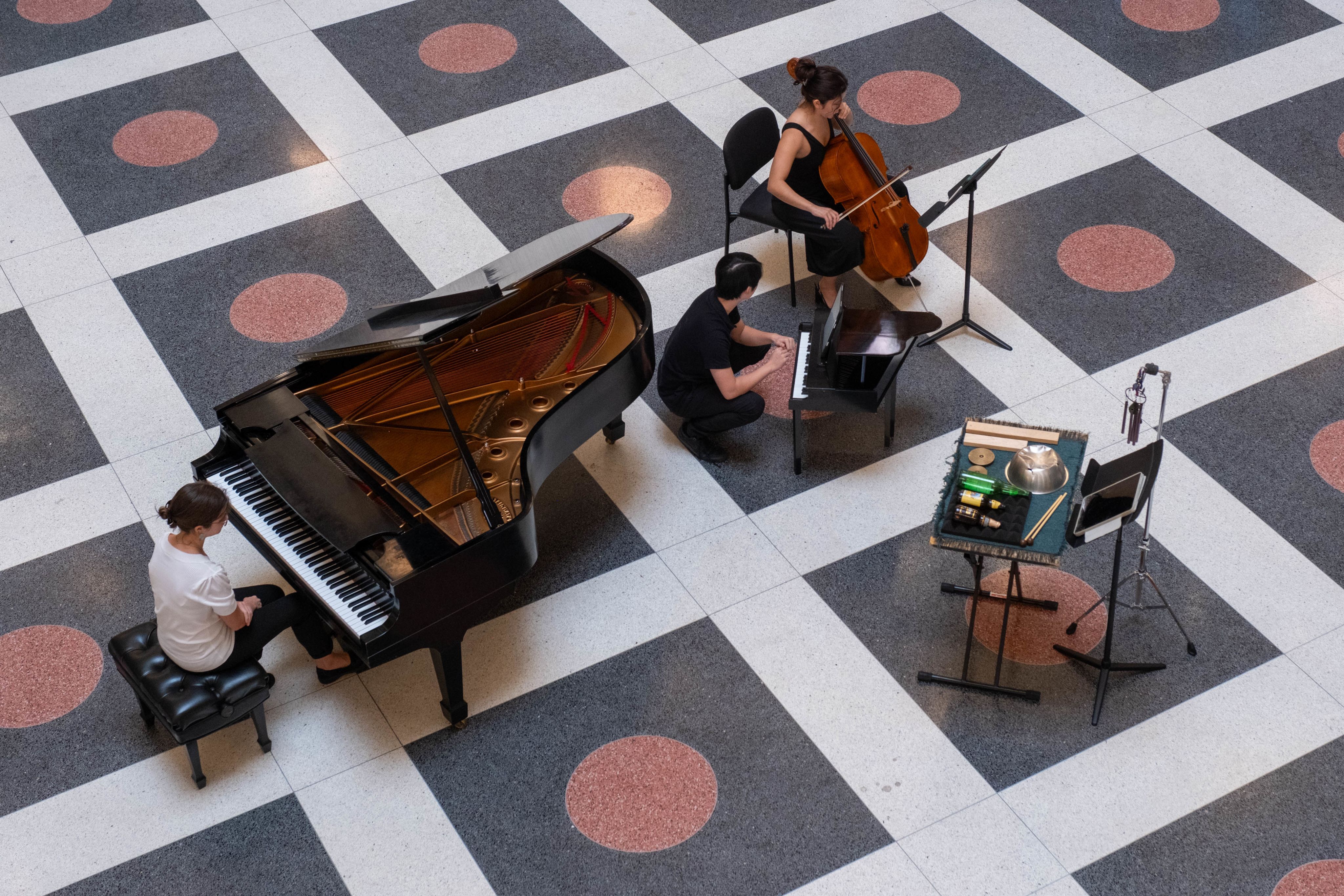
"Call and Response is a perfect example of a project that fulfills the Mitchell Center mission by not only engaging different disciplines but also bringing faculty and students together for an innovative collaboration that pushes the boundaries of both disciplines,” says Managing Director Melissa Noble.
“The Mitchell Center exists to provide support for this type of academic cross-disciplinary exchange." Among the participants in the project are students enrolled in Chelsea De Souza’s special topics course on musical improvisation. De Souza is a Mitchell Center Scholar in Residence, a one-to-two-year residency and teaching fellow position designed for post-graduate artists and scholars in the School of Art, Moores School of Music, School of Theatre & Dance, Creative Writing Program or Blaffer Art Museum.
Noble points to this programming overlap as a prime example of how the Mitchell Center’s collaborative approach leads to intersectionality in the arts, opening new lines of creative dialogue. “Enhancing the Mitchell Center’s vision through synergistic programming is something we excel at,” she says.
Clarinetist Adam Jones plays "Before the Chasm" by Thane Wimberly
Clarinetist Adam Jones plays "Before the Chasm" by Thane Wimberly
Michael Cheng (left) and Tugce Ozcivan (right) speak before the performance.
Michael Cheng (left) and Tugce Ozcivan (right) speak before the performance.
Haley Houk plays "Aria" by Jackson Okland on the bassoon
Haley Houk plays "Aria" by Jackson Okland on the bassoon
Noble, who also serves as the Coordinator of Interdisciplinary Initiatives, published Collaboration Among the Arts: An Interdisciplinary Approach earlier this fall, a college textbook utilized by the university for the Interdisciplinary Arts Minor.
In defining the give and take that typifies collaborative exchange, Noble notes that cooperative and collaborative are often used imprecisely as synonyms. Whereas artists frequently work cooperatively to realize an individual vision, such as a composer who is hired to write music for a completed film, true collaboration is more rare.
“If some sort of measurement could be made,” she writes, “an authentic collaboration would be an equal contribution by all parties involved to both the concept and the process.” Call and Response is such an authentic collaboration in which a shared vision is developed and realized simultaneously through the efforts of multiple disciplines working in tandem.
“Another overlooked aspect of collaboration among artists is that of the audience as collaborator,” says Noble. “Call and Response presents an ever-changing landscape in which the audience can play a part in activating the piece. As the installation takes shape in this public space, even what might be dismissed as mundane activities become moments of significant activation.”
The public is encouraged to visit the architecture atrium each week throughout the month of November to experience the evolving installation through dynamic performances, culminating in a final concert on November 24. Mary Magsamen, interdisciplinary artist and Manager of Public Programs at the Menil Collection, will moderate an artist discussion with Stephen Montague and Alex Julyan alongside faculty from the Moores School of Music and Gerald D. Hines College of Architecture and Design, on November 13.
Performance Schedule
All events will take place in the atrium of the College of Architecture buildling

